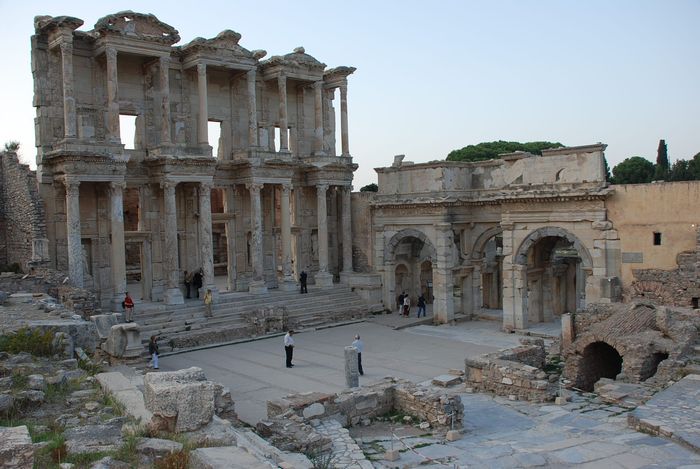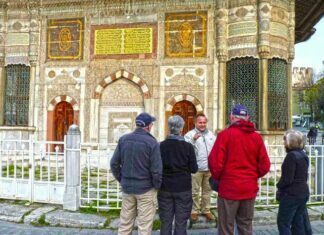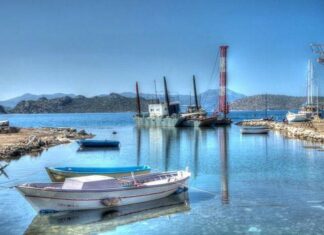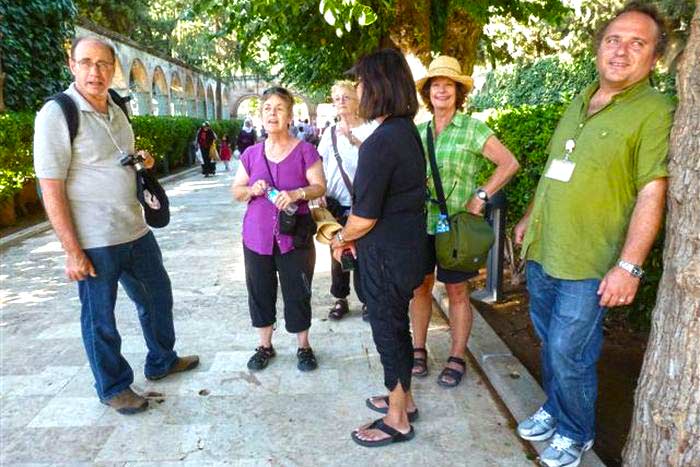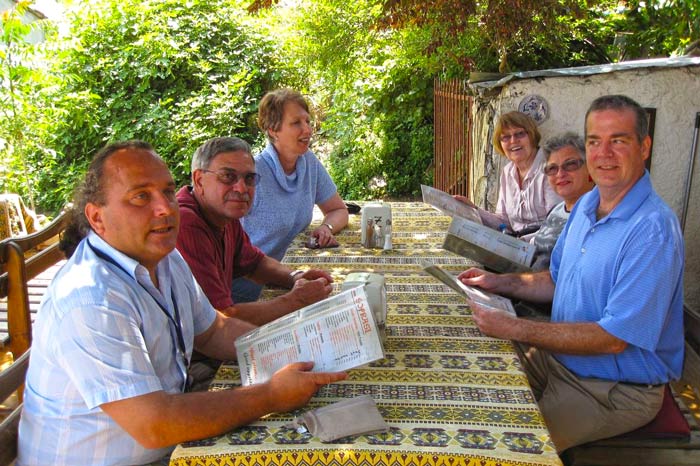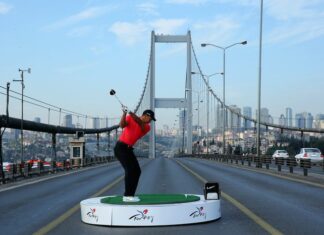Day 1 Istanbul
Istanbul is well-known around the world. Many people visited, visit and will visit it. One or two days is very short time to explore and enjoy that city. Therefore, the first three days of your tour we will spend in Istanbul.
We will spend the morning visiting the Hippodrome Square. This used to be the sporting and social centre of two empires. The ancient Hippodrome was originally a gathering place, sports area and the scene of chariot races.
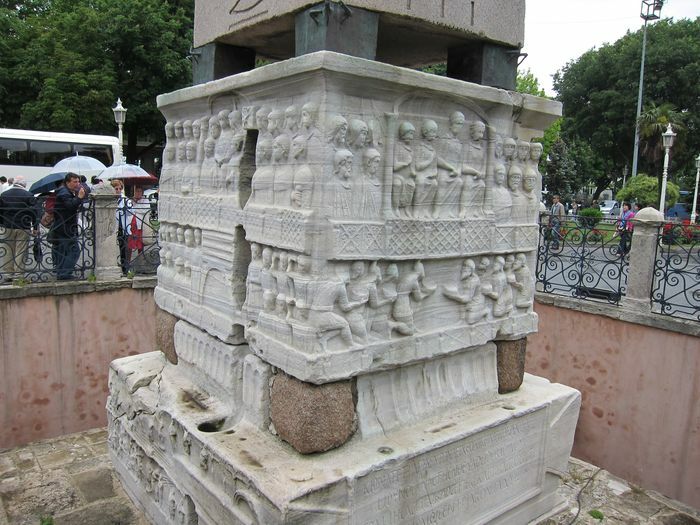
Hagia Sophia
Next is the symbol of Istanbul throughout time, Hagia Sophia or St. Sophia. It is a place really enjoyable for all the history, inspiration and beauty it offers. For almost a thousand years the church had maintained its status as the largest Christian church. Today it is the fourth largest one after St. Paul’s in London, St. Peter’s in Rome and Duomo in Milan. Built at the command of Emperor Justinian in the years 532 to 537, Hagia Sophia was first constructed as a church. Then it became a mosque and now it is a museum.
Ataturk, the first president and the founder of modern Turkey, turned it into a museum in 1935. Justinian’s church was ready in less than 6 years. And it reigned as the greatest church in Christendom until the Conquest of Constantinople in 1453. (A suggestion for you is to visit Sofia, the capital of Bulgaria, with local guide Sofia)
Another place of interest will be the Underground Cistern. Emperor Justinian built it in the 6th century and served for water storage. It could store up to 80,000 cu metres of water which was delivered via aqueducts from a reservoir near the Black Sea.

Follows the Topkapi Palace. 9 years after Mehmet the Conqueror conquered Constantinople, he started building his palace. The palace housed the sultans and their exotic entourage until mid 19th century. The complex is a group of structures which incorporates works from successive periods of Ottoman reign. Today the museum displays priceless collections of the imperial treasury, numerous pieces of Chinese porcelain, traditional costumes of the sultans and their families and special section for the preservation of the relics of Prophet Mohammed.
Blue Mosque
Visit Blue Mosque, built in early 17th century and know as Blue Mosque because of its magnificent interior decoration with blue Iznik tiles. It is also unique in the world to have 6 minarets.
Last stop will be at famous historical Grand Bazaar, the largest “souk” covered oriental shopping mall in the world, where you will find 4,400 shops under one roof where each trade has its own street. There is a wide selection of leather, jewelry, antiques, copperware, souvenirs, and famous hand-made Turkish carpets displayed in this historical shopping center.
Overnight in Istanbul.
Day 2 Istanbul
We will start the day with a nice breakfast and get ready to continue exploring Istanbul. It is going to be a relaxing day when we will enjoy Istanbul’s nature.
You have heard many times that Istanbul lies on two continents, I am sure. Now you will see it. We will drive to the Asian side of Istanbul via the Bosphorus Bridge that connects the two continents, Asia and Europe. The bridge was built in 1973, the 50th anniversary of the Republic of Turkey. It is 1.560 m long and 64 m high. We will head to the highest hill in Istanbul, Camlica Hill, to enjoy the unique scenery, magnificent view of the Bosphorus and the beautiful nature.
We will have a short break in a place in Istanbul to taste the world-famous yoghurt.
Before we get to the hotel tired but emotionally satisfied, we will pay a visit to the visit historical Spice Market (Egyptian Bazaar). This bazaar was built in 1664 as a part of Yeni Mosque complex situated nearby and named Egyptian Bazaar because spices and herbs brought from or via Egypt were sold in it.
Last but not least is the “Golden Horn”. We will get a cable car to Pierre Loti Hill. This is another stunning view of the city. The hill was named after the famous French writer, Pierre Loti. He was a French sailor and a writer.
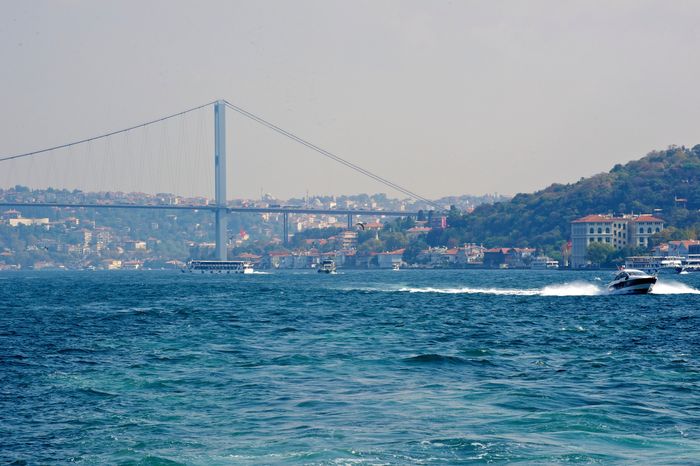
Overnight in Istanbul.
Day 3 Istanbul
After breakfast, departure to the royal residence of Ottoman Sultans, the sumptuous Dolmabahce Palace. Sultan Abdulmecid II spent millions on a palace that would give the illusion of prosperity and progressiveness. Dolmabahce Palace was built between 1843 and 1856 by Sultan Abdulmecit.
Until the 17th century the area where Dolmabahce Palace stands today was a natural harbour. It was a bay, where the navy anchored in the early periods. When the Ottomans conquered Istanbul, they gradually filled that bay. So it became one of the imperial parks on the Bosphorus. Its name is Dolmabahce, meaning “filled garden”. Sultan Abdulmecid II spared no expense in creating a house to rival the most opulent palaces of France. The result is a magnificent building, on an area of 25 hectares, consisting of 285 rooms, four grand salons, six galleries. Also, five main staircases, six hamams and 43 toilets.
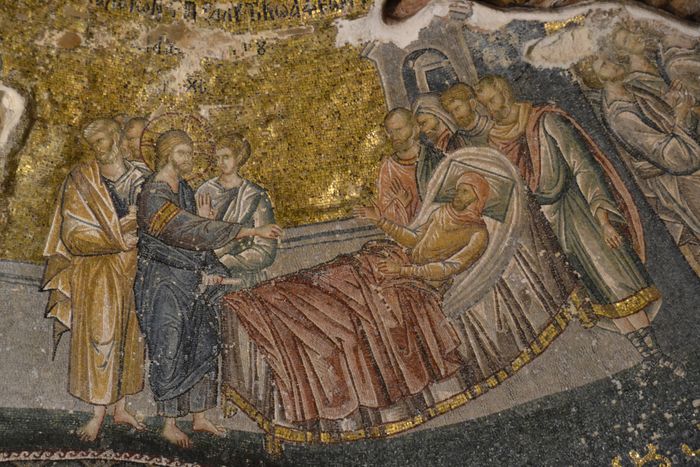
Chora Museum
Follows a visit to Kariye Museum or Chora church. Chora is an ancient Greek word which means ‘countryside’. Originally, it was a part of a monastery complex outside the walls of Constantinople, to the south of Golden Horn, in the early 5th century. The church was built in the 4th century during the Byzantine days, then outside the city walls. In the beginning of the 16th century the church was converted into a mosque and it stayed like that for four centuries. The Turkish government rediscovered and restored the Chora Church quite a lot in mid 19th century. Then in 1948, the Byzantine Institute of America began the painstaking work of revealing and restoring the hidden mosaics and frescoes.
We will also explore Istiklal Street. This is he city’s most popular strolling, shopping and snacking street. It is now reserved for pedestrians, lined with boutiques, cafes, consulates, restaurants, galleries, cinemas and banks. It is located in the historic Beyoglu (Pera) district and is 1.4 kilometres long.
Overnight in Istanbul.
Day 4 tours Turkey Istanbul – Antalya
Morning fly from Istanbul to Antalya
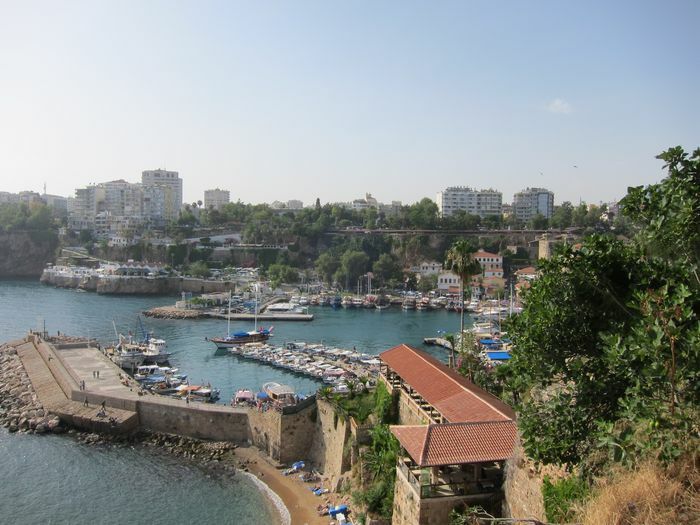
When we arrive in Antalya, we will continue to Aspendos. There is one of the Roman Empire’s greatest remaining pieces of architecture – the magnificent theatre with its stunning acoustics. and Roman Aqueduct. The famous theatre is dedicated to Emperor Markus Aurelius. It is still useable today with a seating capacity of 20,000 people. Another thing to pay attention to when in Aspendos are the aqueducts. They are also very impressive and signify the advanced engineering of its time. Aspendos, as well as Side, is known as the place that coined money in its own name at that early period.
After all the emotions at the theatre, you might need some free time that you can spend preferably at the historical harbour.
Overnight in Antalya.
Day 5 Demre – Kekova
After breakfast, we will go to Demre (Myra). In today modern town of Demre a once large and important city is hidden. This is the Lycian city of Myra. As it was founded on a fertile plain, agriculture was probably an important industry in the area. The New Testament talks about Myra because St. Paul stopped at Myra during his journey to Rome. In the city’s harbour, Andriake, he changed boats on his way to trial in Rome around 60 AD. St. Nicholas was the bishop in the local church. During his time he destroyed many temples in an effort to eliminate paganism in the population.
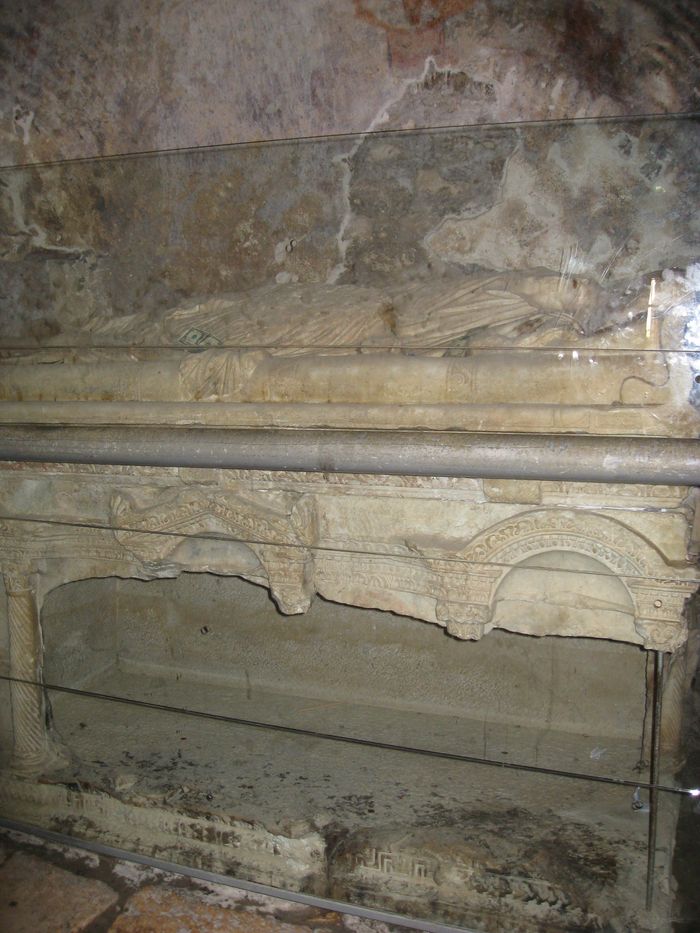
Then, we will take a boat to the island of Kekova. Before the Byzantines, the Romans or the Ottomans this place was home to the world’s first democratic federation. Unfortunately, its remains are clearly visible just a few meters below the clear waters of the Mediterranean. Today the island, where the remains of the sunken city are, is uninhabited. It’s in UNESCO’s list of World Heritage as a tentative candidate.
Overnight in Antalya.
Day 6 Bodrum
Morning fly from Antalya to Bodrum via Istanbul.
Arrive in Bodrum & transfer to your hotel.
Free afternoon.
Overnight in Bodrum.
Day 7 Gulet
This is going to be a whole day sailing in Bodrum bays on a private gullet (wooden boat).
Overnight in Bodrum.
Day 8 Miletus – Didima – Sirince
After breakfast, we will drive to the city of Miletus. It used to be one of the most important cities and sea trading ports in the ancient Greek world. It became a leading centre of Greek thought and culture over the following centuries. A small Christian congregation developed after St Paul’s visits at the end of his third missionary journey around AD 57. It eventually declined due to the silting up of its harbours.
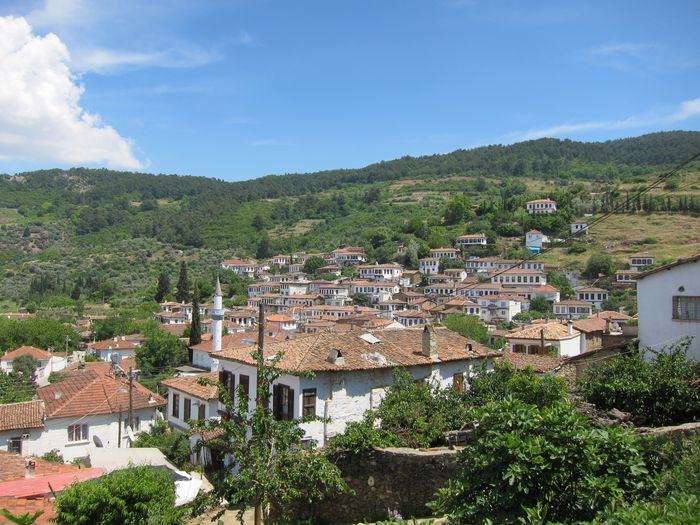
Continue to visit Didyma. The most important oracle site in Asia Minor. In the ancient times, Didyma was famous as the place where a colossal Temple of Apollo stood, and the oracle revealed the future. The temple was a superb example of architecture and a sign of grandeur of this area, outstanding for culture and art. It enclosed a sacred natural spring.
According to ancient sources, Didyma area had been considered sacred even before Greek settlers arrived on the coast of Asia Minor. Also, its oracle was much feared and much attended. In 493 BCE the Persians destroyed the archaic temple of Apollo at Didyma. For many years the temple was a complete ruin. It was not until the time of Alexander the Great, when the temple started to be re-erected. There is a legend saying that after Alexander the Great had arrived at Didyma, the sacred spring began to flow again.
Overnight in Sirince.
Day 10 Ephesus
There is no way that you visit Turkey and you miss Ephesus, especially when you are that close to that ancient city. Let your guide take you on a history journey. Allow yourself feel the mystical atmosphere of the ancient city and theatre. After breakfast, we will visit the ancient city of Ephesus, which remains to be the best preserved ancient city in the world and one of the Seven Churches of Asia addressed in the Book of Revelation.
Ephesus was once considered the most important Greek city and the most important trading centre in the Mediterranean region. It survived many attacks and changed hands several times between conquerors. Always, though, his protector was Artemis, the Goddess whose temple was one of the “Seven Wonders of the Ancient World”.
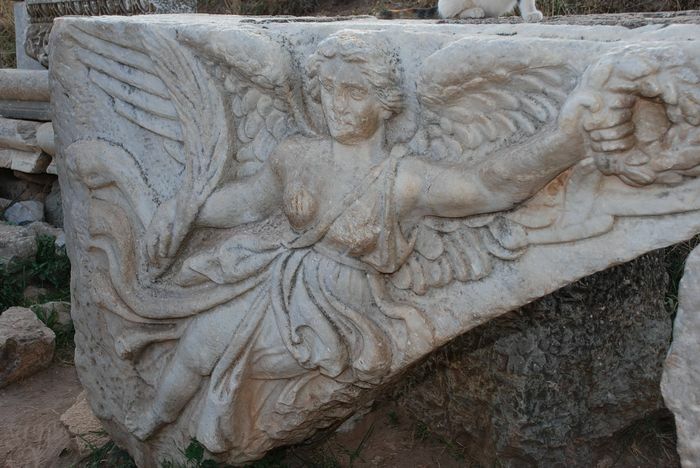
Today, the majority of the ruins are beautifully restored and one can visit a complete city including the Arcadian Way, the Great Theatre (for 125,000 people), the Marble Road, the Celsius Library, the Temple of Hadrian, the Trojan Fountain, and the Gymnasium.
Ephesus played a vital role in the spread of Christianity. St. Paul and St. John were the ones who visited the place, rebuked the cults of Artemis and won many Christian converts. Not every Ephesian was open to Paul’s Christian message. There was a man who started a riot because he was worried Christianity would ruin his trade.
Christianity
Nonetheless, Christianity was soon spread on these lands. Even, St. John brought Virgin Mary to Ephesus after the death of Jesus Christ and she lived until the age of 101 in a small house built for her on Mt. Koressos. Now it is a popular place of pilgrimage. After the house receives the official sanction of the Vatican, there is a commemoration ceremony every year on August 15th.
The foundations of the house are old. They may date back to the 1st century. The rest of the building is from the 6th century. The setting is beautifully peaceful, encouraging contemplation.
We will, of course visit The House of Virgin Mary.
Then, we will continue to St. John’s Basilica which was built in 6th century. The building was in the shape of a cross and 6 domes covered it. Under the central dome was the tomb of St. John. It has a marble marker today. When Christianity became the state religion, the crowds who once flocked to the Temple of Artemis turned their attention to this cathedral.
Overnight in Sirince.
Day 11 Istanbul
Transfer to the airport for your flight to Istanbul. Upon arrival in Istanbul, transfer to your hotel. This will be a leisure day in Istanbul. This can be the time for you to start planning new journeys. Just an idea for you, Balkan tours 2023.
Overnight in Istanbul.
Day 12
After breakfast, the tour concludes. Transfer from your hotel to the airport.
Safe flight home and don’t forget to contact us for this and other tours.

